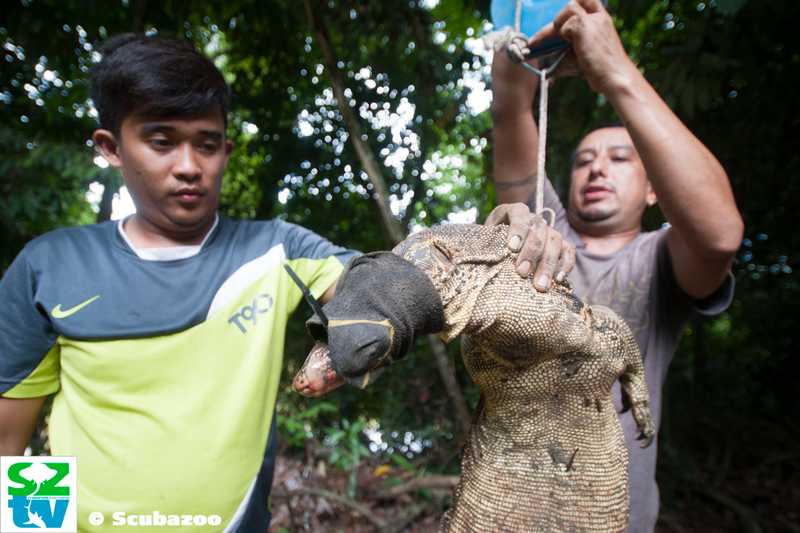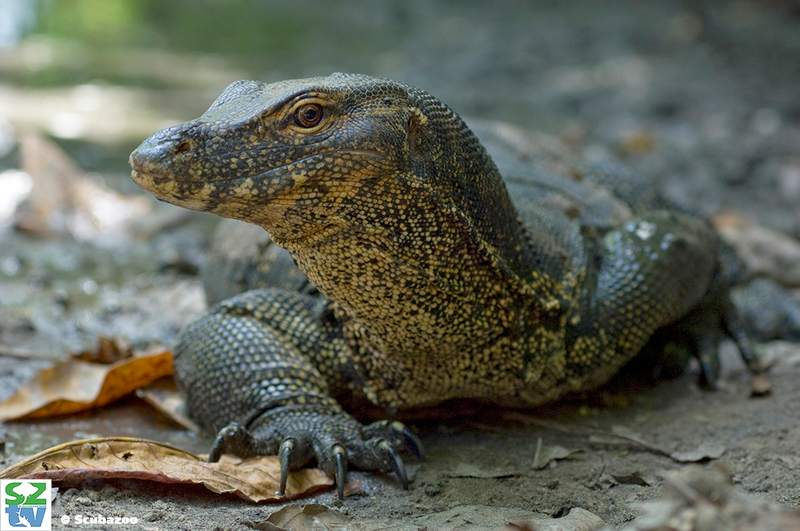KOTA KINABALU, July 10 — Monitor lizards often gets a bad rep due to their menacing looks and penchant for going through your household garbage. But to Mexican researcher Sergio Guerrero-Sanchez, they are the forest cleaners of Borneo.
In the latest episode of Borneo Jungle Diaries, a webseries on Sabah’s flora and fauna, Guerrero-Sanchez waxes lyrical about the reptile’s many interesting features and why they continue to flourish under any condition.

“Water Monitors are generalists. They will eat anything and everything, and their voracious appetites have enabled them to flourish in almost every climate; from the mountains and treetops of the Bornean jungle, to the waterways of the Kinabatangan.
“In some countries they are a bit of pest, searching for food nearby the human settlements, looking into the waste but also grabbing domestic chickens and eggs, or competing for fish, ripping the fishermen nets. But in some other places they are quite tolerated since they are seen like pest control, eating the rats around the villages,” he said.
But beyond acting as Borneo’s unofficial waste management system, Guerrero-Sanchez believes that water monitor lizards have a very important place in the Bornean ecosystem.
“Monitor Lizards are an indicator species: in other words, their characteristics and behaviour can tell scientists a great deal about the ecosystem they inhabit. Due to the biological resistance of the lizards and their wide ranged diet and distribution within the landscape, it could be an important indicator of the animal community’s health,” he said.

The water monitor lizards, which grows on average to around 1.5 meters in length, is the second-heaviest lizard in the world, after the Komodo Dragon, which also shares a dangerous bite and a fierce reputation.
In addition to his regular work as a vet, Guerrero-Sanchez is the leader of the Biawak project, studying monitor lizard adaptation to the fast-changing constitution of the the Bornean biosphere. They are studying the adaptability of the water monitor to an increasingly fragmented environment.
Their work involve capturing, measuring and observing water monitors in their natural spaces, before fitting them with a lightweight radio collar that allows the team to track their movements.

“This helps us paint an ever-clearer picture of how individual lizards move from one habitat to another, often crossing industrialised or urban areas that humans have changed utterly in just a few years,” he said.
Industrialisation and agriculture, especially the palm oil industry, are both great movers of social progress in Borneo, and great threats to its natural wealth.
By observing the small shifts in the behaviour and biology of indicator species such as water monitors, scientists can begin to build a real-time model of how human activity is influencing the natural world around it.
Shifts in habitat areas, population movements, chemical buildup in the lizards’ bodies, and changes in diet, can all provide crucial evidence for the ways in which different human activities affect the planet.

The latest episode of Borneo Jungle Diaries, hosted by environmental photojournalist, Aaron ‘Bertie’ Gekoski, investigates life behind-the-scenes at the Danau Girang Field Centre (DGFC).
All episodes will have Bahasa Malaysia subtitles and be released SZtv’s website[b] (Scubazoo.tv) and Youtube, as well as on the Facebook pages of SZtv and DGFC.
Viewers are encouraged to take part in the competition that is being held by answering five questions from the episode correctly each week to win a four-day/three-night stay the Danau Girang Field Centre.
There will also be a grand prize at the end of the 10-series Borneo Jungle Diaries for those who get all questions correct across all quizzes. For more information, check out Borneo Jungle Diaries on the SZtv website.





















